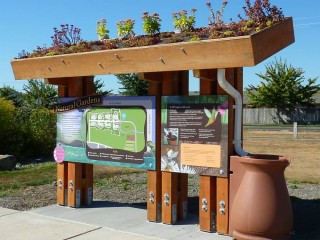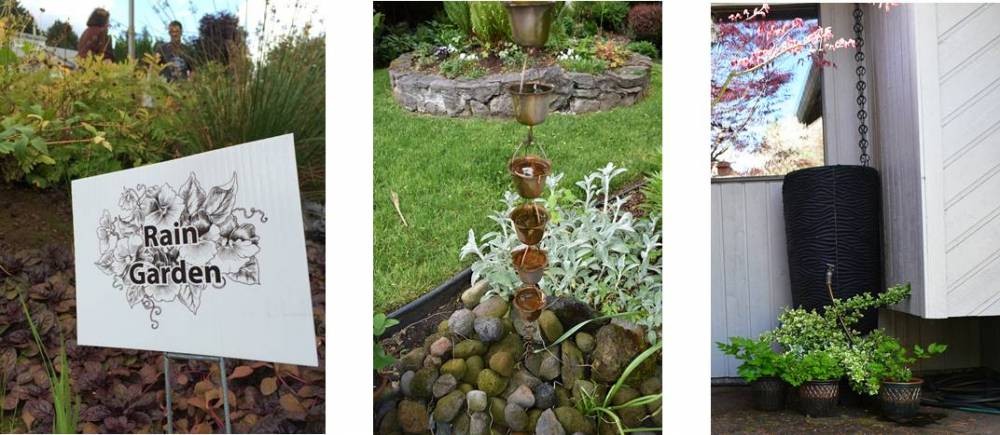Green Blog
Rain, rain, come my way! Rain gardens and reducing runoff
May rainy spell got you down and looking at your garden forlornly? Cheer up by planning ways to incorporate rain water capture and filtration into eye-catching garden features! Why? When rainwater runs off roofs, patios, and pavement, through gutters and storm drains, it flows into nearby waterways, carrying with it any pollution it encountered along the way. This causes increased flooding and erosion near local streams, and increases stream temperatures to levels that harm salmon and other wildlife. Increased pollution in local waterways from fertilizer also contributes to toxic algae blooms that close beloved swimming holes every summer.
Resources
by Author
City of Portland Stormwater Solutions handbook
Rain Garden Handbook for Western Washington
Clark County Clean Water
Landscapes can be designed to retain water on-site, encourage infiltration into the ground, and even to screen out some pollutants through small ponds and wetlands. Here are some ideas to explore when thinking about adding stream-friendly elements to your yard and garden:
- Utilize porous or permeable pavers to increase the natural infiltration of stormwater and hose water into the ground, reducing the potential for pollutants to be carried into storm drains and streams. Some examples of permeable and porous pavers are gravel, bricks or flagstones, interlocking pavers, crushed shells or stone, and bark chips.
- Construct a rain garden, which is a landscaped area that collects, absorbs, and filters stormwater runoff from roof tops, driveways, patios, and other hard surfaces that don't allow water to soak in.
- Add a rain barrel to collect water from your downspout. Rain barrel water is great to use for washing off gardening tools and watering ornamental plants. Many gardeners are fans of "rain chains" - decorative alternatives to downspouts that flow into a barrel or pot for rainwater collection. But beware! Rain barrels can fill quickly, so need to be placed in areas where the overflow can infiltrate into the ground. Rain barrels should also have a cover or top to prevent water-hatching insects (like mosquitoes) from making themselves at home.
- Create a drywell or a soaking trench. Learn more from the City of Portland.
You can see systems like these in action during the 2019 Natural Garden Tour! Join us on July 14 to tour 12 Clark County residential gardens to see how to practically incorporate runoff management into a beautiful natural garden!




